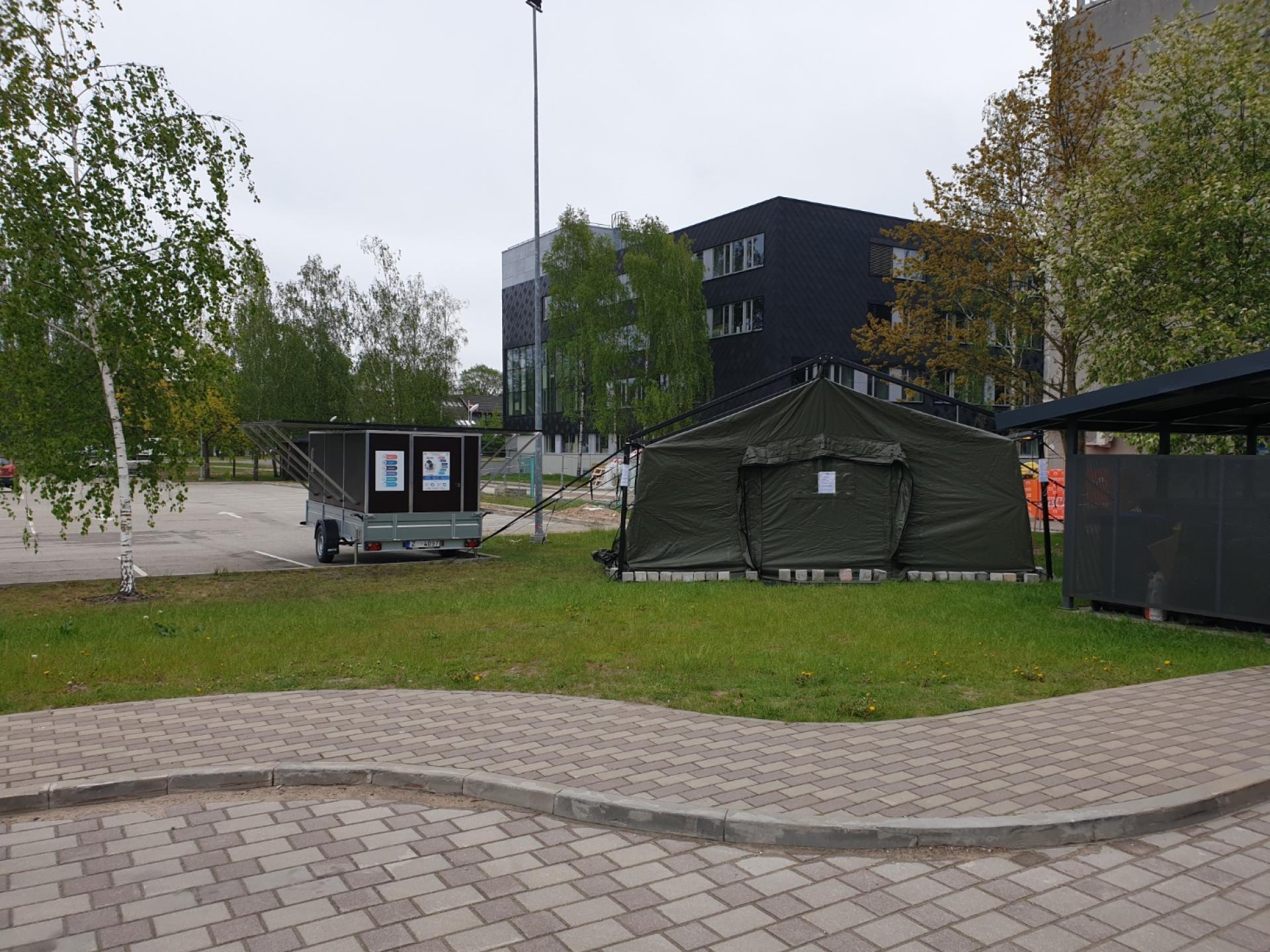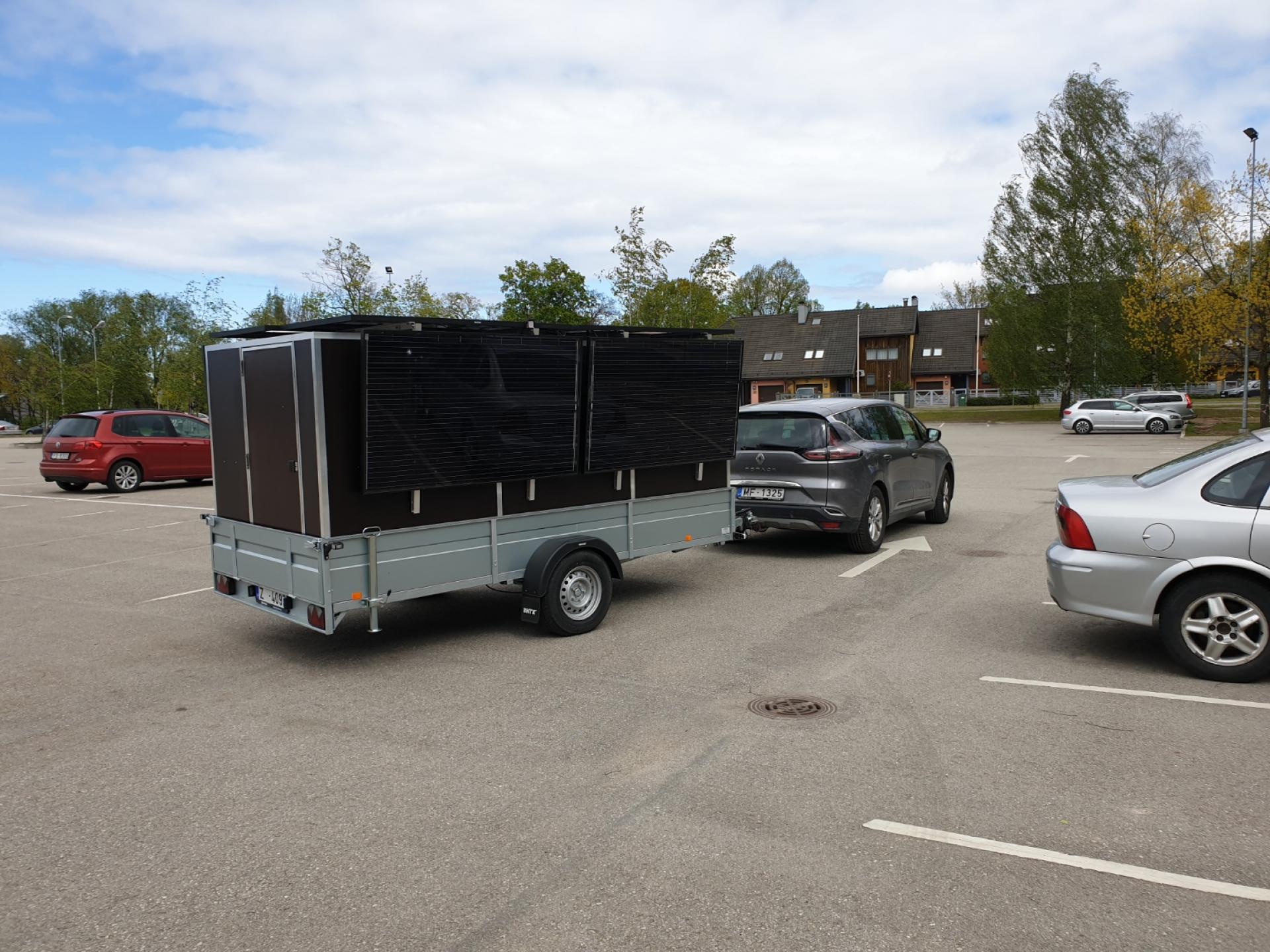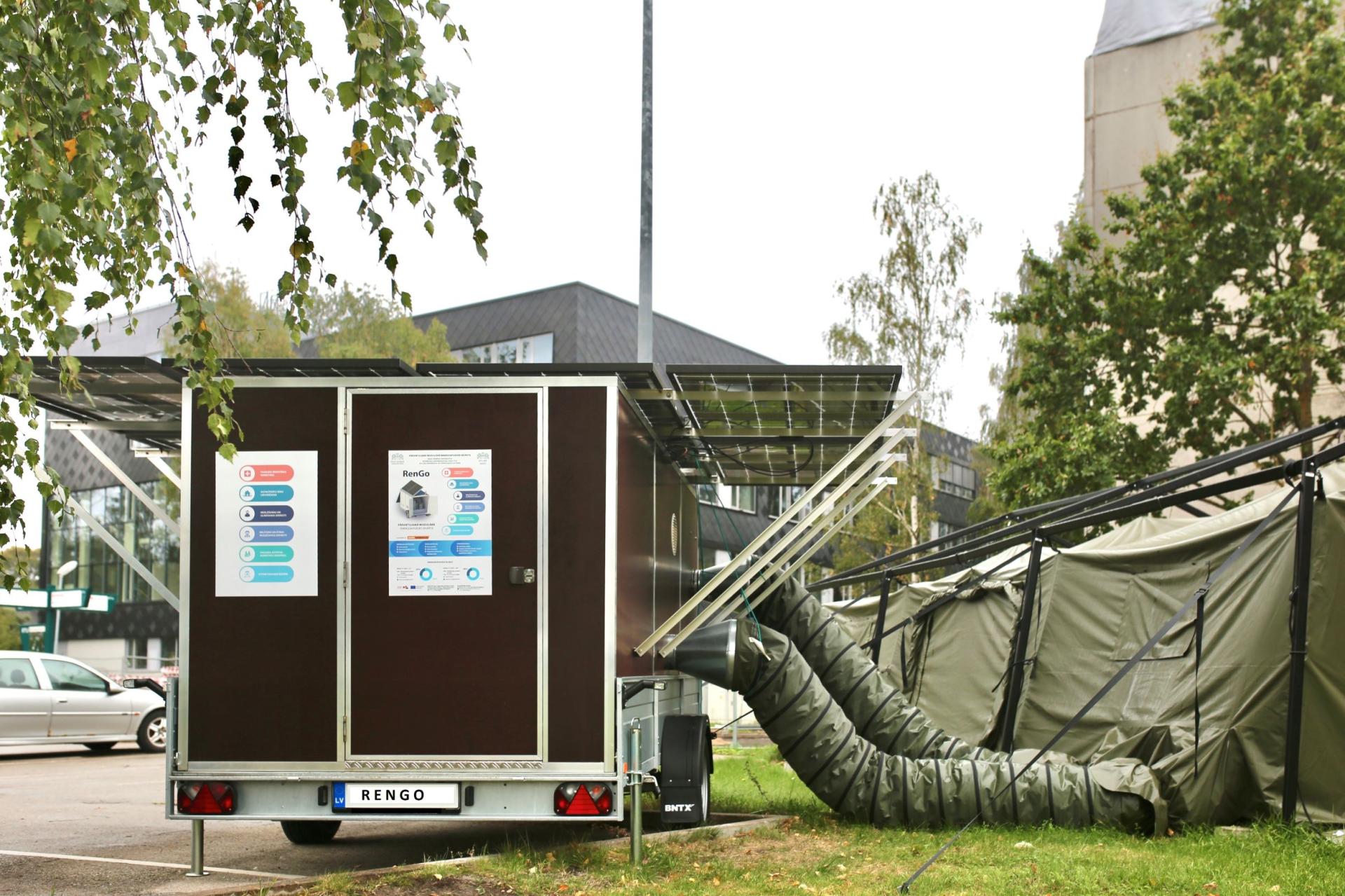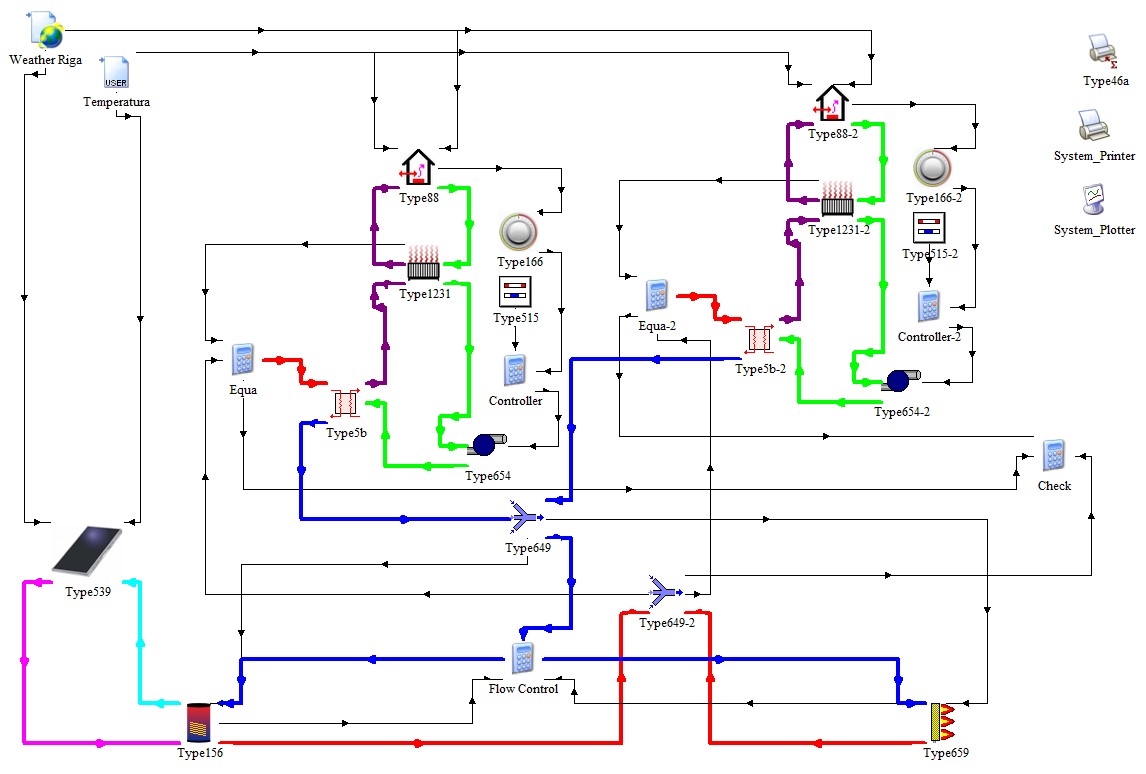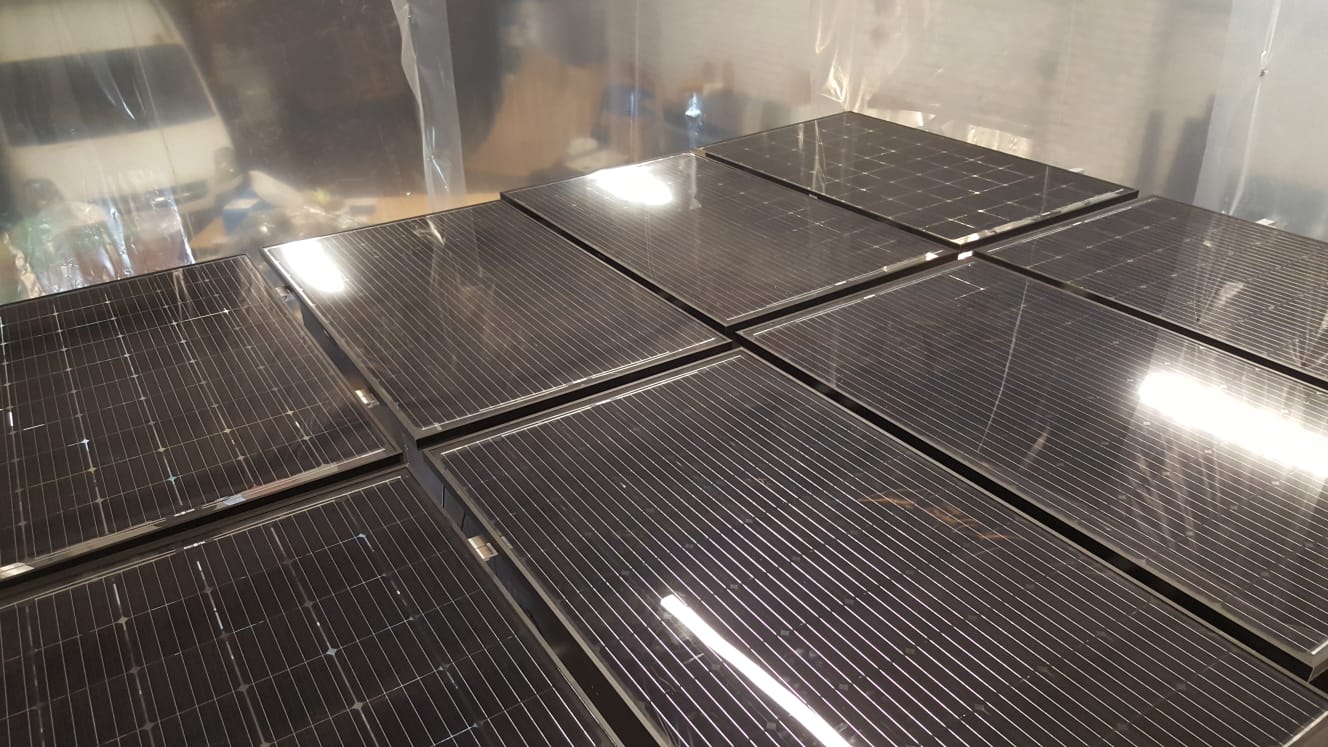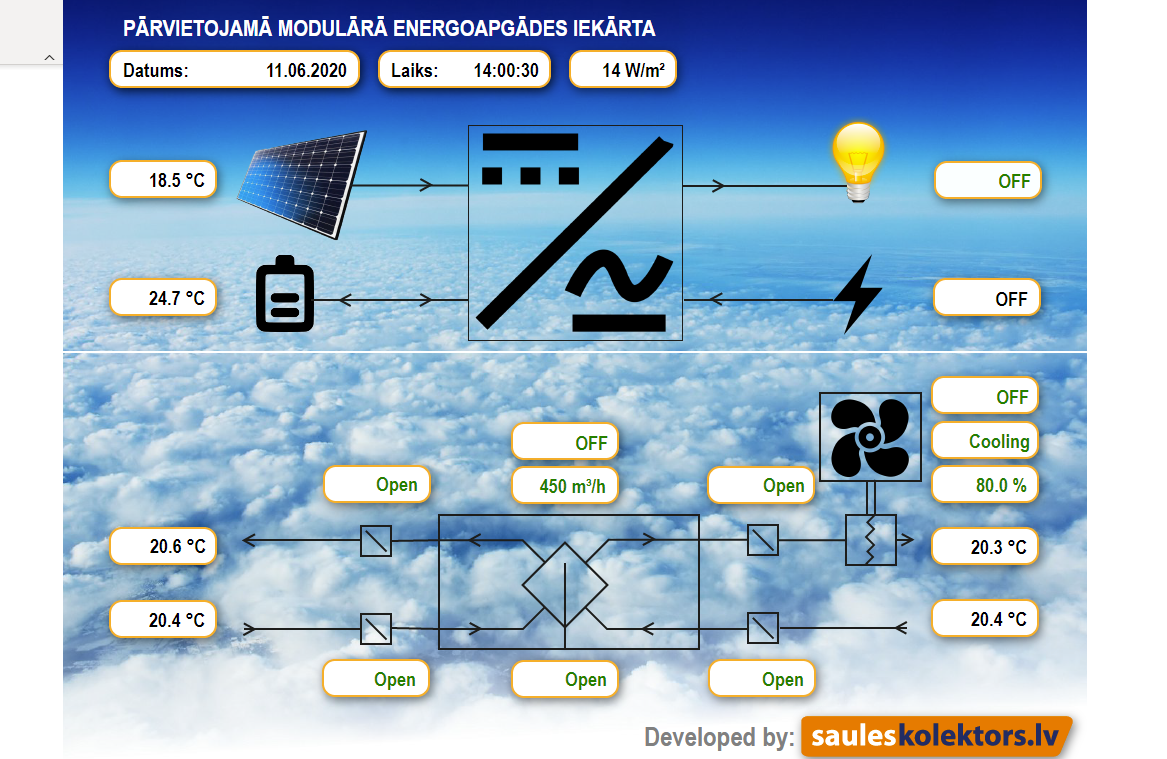MOBILE MODULAR ENERGY UNIT
Basic information
Project Title
Full project title
Category
Project Description
The invention relates to the field of energy technology and mobile power supply equipment. The mobile modular energy unit provides power generation and supply to users such as temporary medical camps, disaster relief sites, temporary search and rescue camps, refugee camps, temporary recreation camps, and other unclassified buildings. Nowadays quickly installable and energy-efficient ventilation system with heat recovery is essential to ensure adequate indoor air quality.
Project Region
EU Programme or fund
Which funds
Other Funds
European Regional Development Fund project No.1.1.1.1/16/A/048
Description of the project
Summary
The project addresses mobile energy units with enhanced use of renewable energy. The utilization of renewable energy sources allows for undisruptive operation of critical facilities in an event of the delays in the main fuel delivery and significantly reduces overall negative environmental impact. In addition, the proposed solution also aims to facilitate further technology developments which have already been patented in Latvia.
The mobile modular energy unit provides power generation and supply to users such as temporary medical camps, disaster relief sites, temporary search and rescue camps, temporary recreation camps, and other unclassified buildings. Nowadays quickly installable and energy-efficient ventilation system with heat recovery is essential to ensure adequate air hygiene and occupants’ comfort in temporary structures.
The unit (RenGo) provides simultaneous supply of electricity and heat (including cooling) and has a built-in heat recovery device. The first working prototype is assembled on a common car trailer base and can be towed by a light vehicle. The initial size of the first prototype : width 1.8 m, length 3.7 m, height 1.6 m.
Key objectives for sustainability
The developed mobile modular energy unit primarily uses solar energy for its operation. It includes eight photovoltaic cells for power generation, the electricity is converted into thermal energy in the heat supply unit and/or directly supplied to the consumers. When energy is not consumed, it is stored in the energy storage battery. If necessary, it is possible to start the diesel generator.
In Latvian climatic conditions the modular energy unit can work autonomously 50% of time during the year without fossil fuel generator. During summer the unit can provide autonomous work for 93 % of time and would require only 20 l of diesel fuel for the whole summer season.
Key objectives for aesthetics and quality
The key objective is to develop mobile energy source which can be used as a single unit on complex systems with several connected units. Each unit should be mobile and transportable by a regular car. In addition it should allow the use on public roads. It is planned to develop a modern ICT for control and power optimization and a new visual look that would fit or easy adopted civil and military needs.
The unit will be supplied with a comprehensible user manual that will allow the operation by an ordinary end-user without specialized knowledge.
Key objectives for inclusion
The project addresses the problem of electricity supply and the quality of indoor air in temporary camps and shelters for refugees, displaced persons and other people in crisis situations. Indoor comfort and HVAC systems efficiency of temporary shelters were often ignored in the design process, as they were primarily built to provide safety of camp residents. Research [1]shows that such camps are mostly concentrated in places with harsh climate, most often with extreme heat and indoor temperatures of about 39-460C. These data once again show the need to maintain an appropriate microclimate in temporary shelters.
According to recent data rural areas in many countries experience limited or no access to the main electrical grid. If households lack access to electricity, it affects the occupants’ safety and limits their opportunities for socialization, learning and self-sufficiency. According to the same study, on average refugees have access to 200 Wh/household/day. [2]
[1] D. Fosas, F. Moran, S. Natarajan, J. Orr, and D. Coley, “The importance of thermal modelling and prototyping in shelter design,” Building Research and Information, vol. 48, no. 4, 2020, doi: 10.1080/09613218.2019.1691489.
D. Albadra, D. Coley, and J. Hart, “Toward healthy housing for the displaced,” The Journal of Architecture, vol. 23, no. 1, 2018, doi: 10.1080/13602365.2018.1424227.
[2] https://www.unhcr.org/5db16a4a4
Results in relation to category
The real working modular energy unit was produced. The components of the mobile modular power supply unit are mounted in a mobile closed trailer and are protected from the external environment. The photovoltaic cell unit consisting of 8 solar panels is mounted on the roof of the trailer. 4 solar panels are mounted horizontally on the roof and 4 more panels with folding mounts on 2 panels of the trailer on the side. There is a consumers' power connector on the body of the trailer, connection to the power supply network , connection to air supply / exhaust ducts, as well as ventilation grilles for air intake and exhaust from galvanized sheet metal. Connections ensure the connection of several modules of mobile modular power supply equipment. Power generation is provided by a photovoltaic unit or a diesel generator unit. Unit is intended as a backup power source in adverse weather conditions (generated electricity - 1 phase, 230V, 50 Hz). If there is no current energy demand, the energy is stored in the energy storage unit (battery technology). Normally, the generated electricity is converted into an AC / DC inverter unit which also controls the electricity generated by the solar cells and the charging / discharging of the batteries. After conversion, the electricity is supplied by the heat supply unit (compression cycle heat pump with cooling capacity ≥8 kW, heating capacity ≥9 kW) and / or is supplied directly to the consumers to the power supply connection. Heat recovery unit provides transportation of fresh, heated air to the temporary tent via thermally insulated ducts and heat recovery from indoor warm air, which extends the autonomous life of the mobile modular power supply. The portable modular power supply is controlled by the main controller. The main controller is a freely programmable control and is equipped with an Internet modem that provides remote control.
How Citizens benefit
The mobile energy unit is designed to provide temporary campuses with humanitarian, socio-communicative, military, disaster relief and other functions with energy supply and HVAC for indoor air quality. In addition, an emerging challenge of COVID-19 containment should be addressed more thoroughly in overcrowded campuses by maintaining physical distancing measures and providing sufficient air exchange.
Ordinary citizens can use the invention for recreation/leisure activities (caravanning, event organisation, vacation homes, summer camps).
Innovative character
RenGo advantages:
1. use of renewable energy sources
2. simultaneous production of heat (cooling) and electricity
3. reserve energy source
4. adapted for transportation
5. provides heat recovery
6. reduction in electricity consumption
7. silent operation
8. remote control
9. can be used as "sharing" similar to car-sharing

